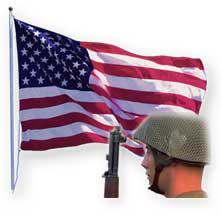Marine Action at K-16
I applied for the combat action ribbon and was told that I did not qualify because I was an aviation ordnance
man. However, I do believe my service record indicates the action I was in at Airfield K-16 in Korea during
April and May of 1951 merits that ribbon.
General Ridgeway had requested Marine close air support for the 8th Army. The 1st Marine Air Wing sent about
100 of us with 12 F4U Corsairs to the air strip called K-16. It was located north and west of Seoul between Seul
and Kimpo air strip. I have heard that we were at the Seoul Airport. The problem I have with that is: (1) There
was NO surfaced runway where we were. The engineers had leveled the sand duns and laid a steel matt runway. (2)
There were no buildings at all, plus no lights and no taxi ways. (3) We were totally surrounded by water. The
access to and from the island was by pontoon bridges.
We were on a sandbar in the middle of the Han River. I arrived about the 2nd or 3rd of April 1951. The air
strip was very primitive. There were no lights, no fire equipment, no buildings. There were just a few tents with
fox holes nearby. We were with the Army's 25th Division. That Division supplied our security. They had four
halftracks with quad 50s mounted on each one. Pontoon bridges provided access to both sides of the sand bar. Kimpo
K-14 was about five miles west of us.
On April 22, 1951, the Chinese army started its spring offensive. When the Chinese had retaken Uijjongbu, the
flood of Korean refugees from Uijongbu and Seoul began to cross over the Han River on the pontoon bridges. Several
thousand headed south every day.
One of the Chinese objectives was to take Kimpo K-14 and Seoul. Our airstrip was between the Chinese and Kimpo.
I am not sure who was between us and the Chinese. I think it could have been an Australian regiment called the
"Diggers", but I am not certain. I know the halftracks were from the 24th Army Division. The Army's 25th Division
began to fall back by crossing the pontoon bridge over the Han River. Then came the Army tanks. Close to twenty or
more tanks crossed the pontoon bridge. We asked them where they were going. They said they were going to Osan
about 30 miles south of Seoul. Then the four halftracks guarding our airstrip received orders to pull back to Osan.
That left us with no security. The 1st Marine Division sent a rifle platoon to provide security for us.
We began to receive nightly visits by the Chinese and North Korean infiltrators. As the Chinese came close, the
infiltrators increased to the point that we were called out several times at night to help the rifle platoon
defend our strip. The infiltrators would go up stream on the Han River and float down to our airstrip. Several
were killed before they made it to the airstrip, because the river split and went on both sides of the sand bar or
island. The rifle platoon was not able to cover every area, so we were called out several times at night to help
stop the infiltrators from getting to our planes and the ammo dump.
During the day our pilots kept the Chinese from getting to the Han River. Several times the pilots would not
get out of the cockpits of the Corsairs. They would land and we would put on all the ordnances we could, including
napalm. The pilots would take off and make a 180 degree run, drop their ordnance, and return for more. At this
time, we received some sniper fire from houses on the other side of the Han River.
I am not sure who was in command. The squad C.O. was Maj. Don L. Clark from 24 March 1951 until 2 May 1951. The
commander of our strip told us that if the Chinese started to cross the Han River in force, then we could cross
from our sand bar strip to the other side. However, with close air support and Army artillery, the Chinese
offensive failed and some time in late May they pulled our group out. A fresh squadron moved to another airstrip
closer to the Chinese.
I believe the action performed by each Marine at K-16 between April and May 1951 is consistent with the
requirements for the combat action ribbon. My hope is that I might obtain some confirmation of the action that
took place at K-16.
Corporal Robinson can be reached at 1815 Coeur d'Alene Ave., Coeur d'Alene, ID 83814;
Phone 208-664-6282.
Post Script
Former Sergeant E.B. Thompson (SN1137255 USMC, P.O. Box 1437, Coeur d'Alene, Idaho 83816-1437 (phone
208-667-8062) added: "I also was at K-16 and remember the things that were going on around and near us. I agree
with former Corporal Robinson what he has written here. As of yet I have not put in for this medal, but I hope to
do it very soon. |




